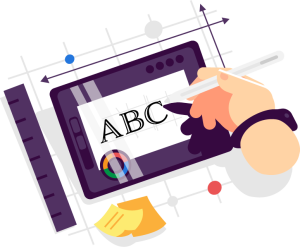Table of Contents
WordPress is a free and open-source content management system (CMS) that allows users to create and manage websites, blogs, and other web content. It is one of the most popular CMS platforms in the world, powering over 40% of all websites on the internet.
WordPress was first released in 2003 as a blogging platform, but has since evolved into a versatile CMS that can be used to create any type of website, including e-commerce sites, social networks, forums, and more. It is highly customizable, with thousands of free and premium themes and plugins available to add functionality and change the design of a website.
WordPress is written in PHP and uses a MySQL or MariaDB database to store and manage website content. It is open-source software, meaning that the source code is freely available for anyone to use, modify, and redistribute. This has led to a large community of developers contributing to WordPress and creating new plugins and themes.
WordPress is easy to use, even for non-technical users, with a simple and intuitive user interface that allows users to create and publish content without needing to know how to code. It is also highly flexible and can be used by businesses, individuals, and organizations of all sizes.

The Basics of WordPress
WordPress is a popular content management system (CMS) used to create websites and blogs.
Here are some basics to get started with WordPress:
1. Getting Started
To get started with WordPress, you need to sign up for a hosting account and purchase a domain name. Choose a hosting provider that provides reliable uptime, fast load times, and good security measures.
Some popular hosting providers for WordPress are Bluehost, SiteGround, and WP Engine.
2. Installation
Once you have your hosting account and domain name, you can install WordPress on your website. Most hosting providers offer one-click WordPress installation, or you can download WordPress from the official website and install it manually.
3. Themes
WordPress uses themes to control the design and layout of your website. You can choose from thousands of free and paid themes in the WordPress theme directory or purchase a premium theme from a third-party provider.
Choose a reputable and well-supported theme and plugins from trusted sources to ensure security and reliability.
4. Plugins
Plugins are used to extend the functionality of WordPress. There are thousands of free and paid plugins available in the WordPress plugin directory, which can be used for anything from search engine optimization to adding social media sharing buttons to your website.
5. Posts & Pages
WordPress allows you to create both posts and pages. Posts are used for blog content, while pages are used for static content like your about page or contact page.
6. Widgets
Widgets are small pieces of content that can be added to your website’s sidebar or other widget areas. WordPress comes with several built-in widgets, such as a search bar and recent posts, and you can also install additional widgets using plugins.
7. Customization
WordPress offers many customization options, including custom menus, header images, and background images. You can also customize your website’s colors, fonts, and layout using a theme or a page builder plugin.
8. Maintenance
Regular maintenance is important to keep your WordPress website running smoothly. This includes updating WordPress, themes, and plugins, backing up your website regularly, and monitoring for security vulnerabilities.


Best Practices for WordPress
Is it a best practice to monitor your website analytics to track website performance and identify areas for improvement. Google Analytics is free and is one of the most recommended method, or you may use any other premium analytic plugin or third party depending on your needs.
Here are some WordPress best practices to follow to ensure the security, performance, and reliability of your website:
1. Updates
Regularly update your WordPress core and plugins to keep your site secure and running smoothly. Updates often include bug fixes, security patches, and new features.
Regularly backup your website to ensure you have a copy of your data in case of a security breach or technical issues.
2. Security
Use security plugins like Wordfence or Sucuri to scan for malware, block suspicious IP addresses, and monitor for security vulnerabilities.
Also use strong and unique login credentials to prevent brute force attacks on your website.
3. Optimization
Only install the plugins you need to avoid conflicts and improve website performance and optimize images for the web to reduce load times and improve website performance.
Also, use a caching plugin like WP Super Cache or W3 Total Cache to speed up your website.
Building A Website
Creating website content involves creating text, images, videos, and other multimedia elements that convey your message and engage your audience. Remember to keep your website’s purpose and audience in mind as you create your website content.
The first step is to determine your target audience: Understand who your target audience is and what type of content they are interested in. This will help you create content that resonates with your audience.
Then, you must define your message: Determine the main message that you want to convey to your audience. This will help you create content that is focused and aligned with your website’s goals.
To Begin
Creating a website sitemap is an important step in the website design process as it helps to organize and structure the website’s content. A sitemap is a visual representation of the website’s structure that shows the hierarchy of pages and how they are linked together.
Here’s how you can create a website sitemap:
1. Main Sections
Determine the main sections of the website, such as the homepage, about page, services page, and contact page.
These main sections will be the top-level pages in your sitemap.
2. Subsections
List the subpages that belong under each main section.
For example, under the services page, you may have subpages for each service you offer.
3. Sitemap Flow
Determine the hierarchy of the pages in the sitemap. This will show how the pages are linked together and the flow of the website’s content.
For example, the about page may link to the team page, which then links to individual team member pages.
4. Review & Refine
Review the sitemap and refine it as necessary. Ensure that the sitemap accurately reflects the website’s structure and content, and that it is easy to navigate and understand.
Website Design
When designing a website, it’s important to keep the user experience in mind and focus on creating a design that is visually appealing and easy to navigate. Use whitespace effectively and avoid cluttering your website with too many elements. Also, ensure that your website is accessible and meets accessibility standards.
Here are some general steps to follow when designing a website:
1. Color Scheme
Choose a color scheme that aligns with your brand and website’s purpose. Consider using a color palette generator such as Canva to help you choose complementary colors.
2. Fonts
Choose fonts that are easy to read and align with your brand’s personality. Select a maximum of three fonts to use on your website.
3. Layout
Use a grid system to create a layout that is balanced and easy to navigate. Consider the placement of different elements, such as the header, footer, and main content.
4. Add Visual Elements
Add visual elements, such as images and videos, that are relevant to your website’s purpose and audience. Use high-quality images and videos to make your website look professional.
5. Responsive Design
Ensure that your website is designed to be responsive and can be accessed on different devices, including desktops, tablets, and mobile devices.
5. Testing
Test your design to ensure that it is easy to navigate, visually appealing, and functions properly on different devices and browsers.


Conclusion
Overall, WordPress is a powerful platform that can be used to create a wide range of websites, from simple blogs to complex e-commerce sites. With a little bit of learning and experimentation, you can create a professional-looking website that meets your needs.





